Flying cars in movies and TV and the real-life vehicles they inspired
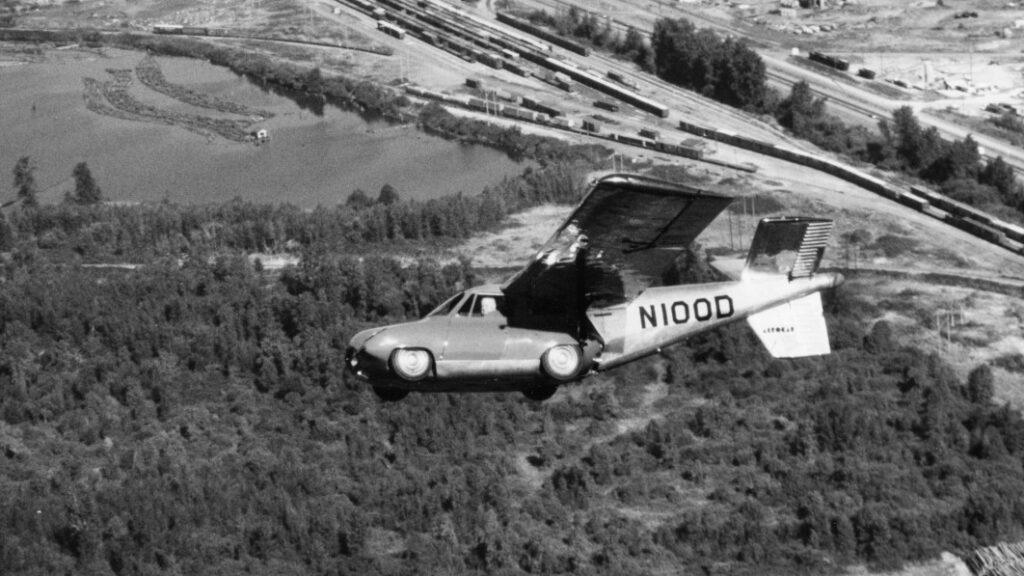
Rob Cumming in his Aerocar flying car airplane.
CBS via Getty Images
The FAA just approved the first electric flying car, the Alef Model A, for test flights.
The first flying car, a Model T with wings attached, was created 106 years ago.
In 1930, the first flying car was featured in a movie, kicking off a long line of flying cars appearing on screen.
Earlier this month, Alef Automotive, a California-based automotive and aviation company, received a special airworthiness certificate from the U.S. Federal Aviation Administration for their flying car.
The certificate permits Alef to conduct experimental flight tests on their new fully electric flying car, dubbed the “Model A.” This marks the first time the FAA has ever granted legal permission to test-run a flying electric vehicle like the Model A. When built, the Model A will be able to maneuver on roads and in the air and perform vertical takeoff maneuvers from a complete stop.
The possibility of a flying car being available for an estimated $300,000 is exciting, but humans and engineers have been fascinated with the idea of flying cars for over 100 years. Why are we only getting flying cars now?
The first “modern car,” made by Carl Benz, was invented in 1885, and the first widely accessible car, the Model T Ford, hit the market in 1908. Only nine years after the invention of the Model T, Glenn Curtiss took aim at one of the first attempts at a flying car.
With the potential of flying cars around the corner, here’s a look through the history of our obsession with making cars fly and the ups and downs that have come with it.
Chariots depicted an early fascination with flying vehicles.
Juno and Iris in a chariot pulled by peacocks in the sky surrounded by angels.
Sepia Times/Universal Images Group via Getty Images
Ancient stories and depictions of gods in ancient Mesopotamia or Greece frequently had them flying around in chariots.
In the 16th-century text “The Man in the Moone,” Francis Goodwin imagined that humans might journey to the moon on a chariot pulled by geese.
Early depictions of a flying car even looked somewhat like a chariot, like this ad card from 1890.
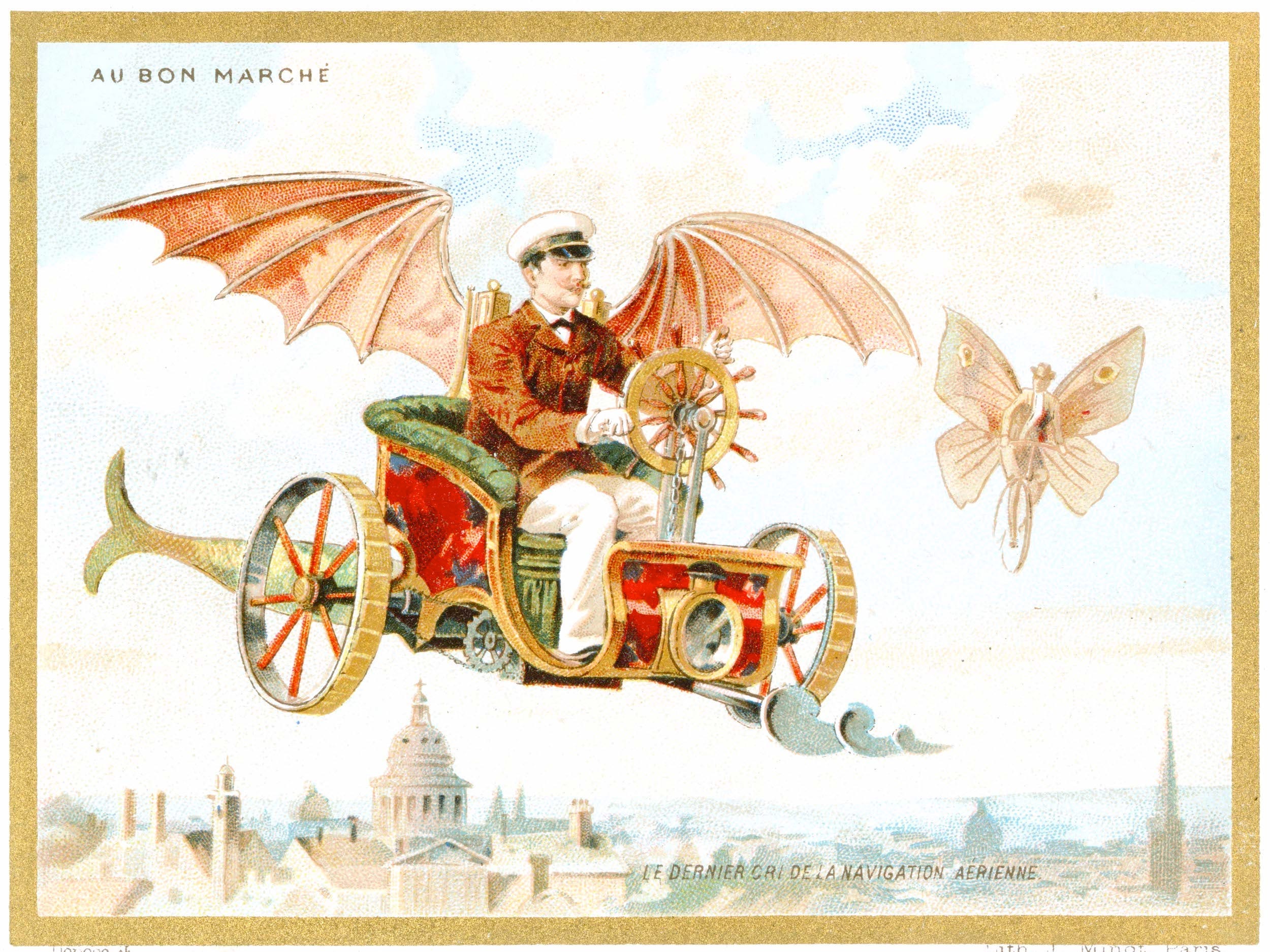
A futuristic ad card depicting a flying car from the Au Bon Marche company.
Transcendental Graphics/Getty Images
Besides ancient references to flying chariots and postcards, the first modern reference to a flying car in the news was in The New York Times in 1894.
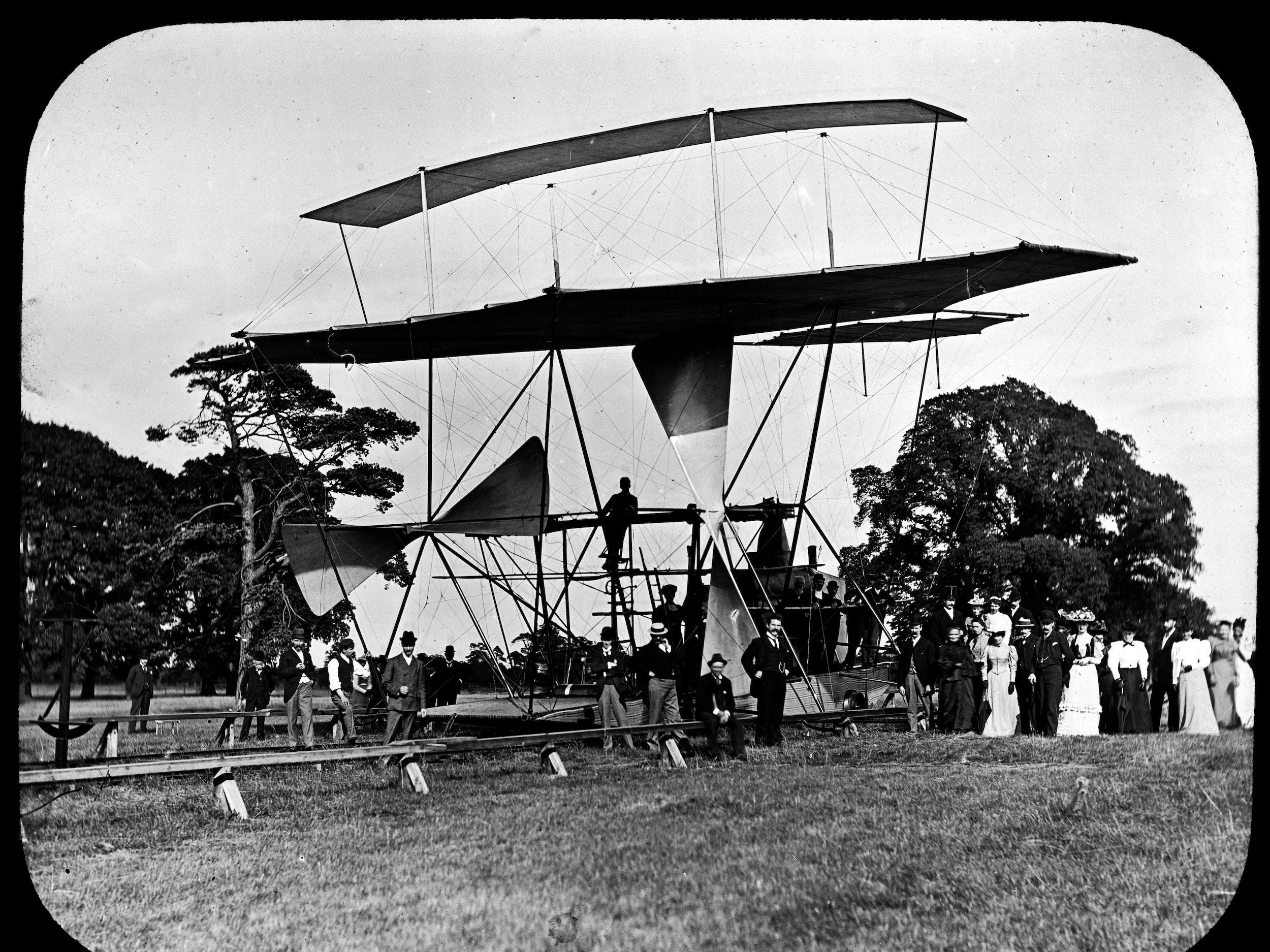
An image of Maxim’s flying machine with a 104-foot wingspan and weighing 8,000 pounds.
SSPL/Getty Images
The New York Times article was titled “Maxim’s Flying Car,” referring to Hiram Stevens Maxim, the inventor behind the first machine gun. In this instance, the term “car” most likely referenced a carriage.
According to the article, Maxim and his team flew 500 feet at a rate of “something like 45 miles per hour.” The description of the machine is what separates it from an actual car; it was “100 feet wide with four side sails and, when seen in the air, will give the impression of an enormous bird.”
More closely resembling an early attempt at a plane than an actual flying car, the headline pointed to the mythology of the flying car.
Widely considered to be the first attempt at creating a flying car, the Curtiss Autoplane was invented in 1917 by Glenn Curtiss, 9 years after the invention of the Model T
Ford.
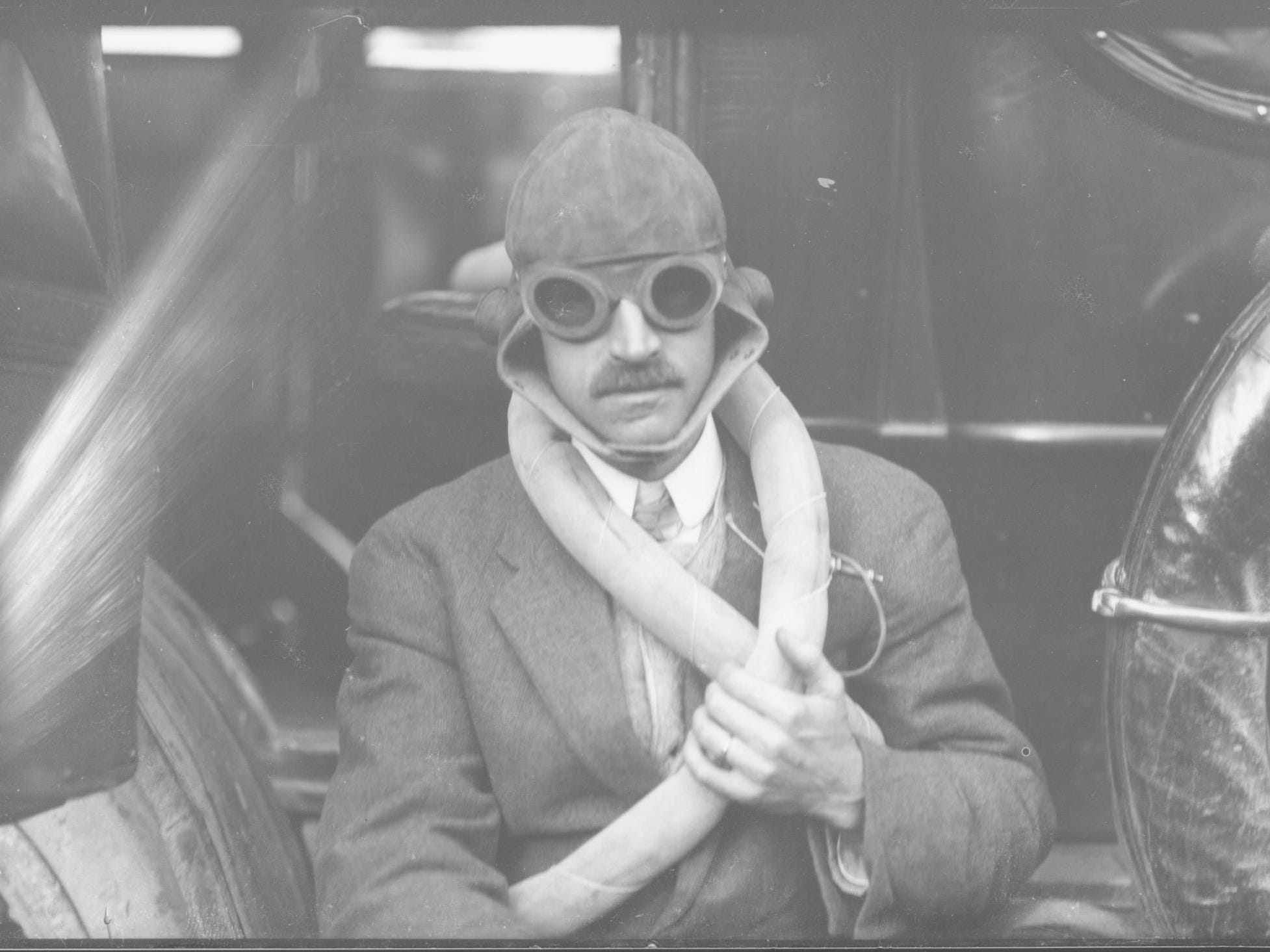
The aviator Glenn Curtiss poses with full equipment before take off.
Louis Van Oeyen/Western Reserve Historical Society/Getty Images
The automobile as we know it had just been invented in 1908, and the Wright brothers had made their first successful flight not too long before that, in 1903. Glenn Curtiss, the man behind the V8 engine and a major contributor to aeronautic engineering, figured: Why not put the two together?
In 1917, in front of a crowd at the Pan American Aeronautical Exposition of 1917, Curtiss attempted to take off in his flying car, according to a NASA paper on flying cars. The car performed more of a hop than it did take flight, and with no financial backers for the project, Curtiss never pursued the idea further.
In 1930, the flying car made one of its first appearances in popular culture in the movie, “Just Imagine.”
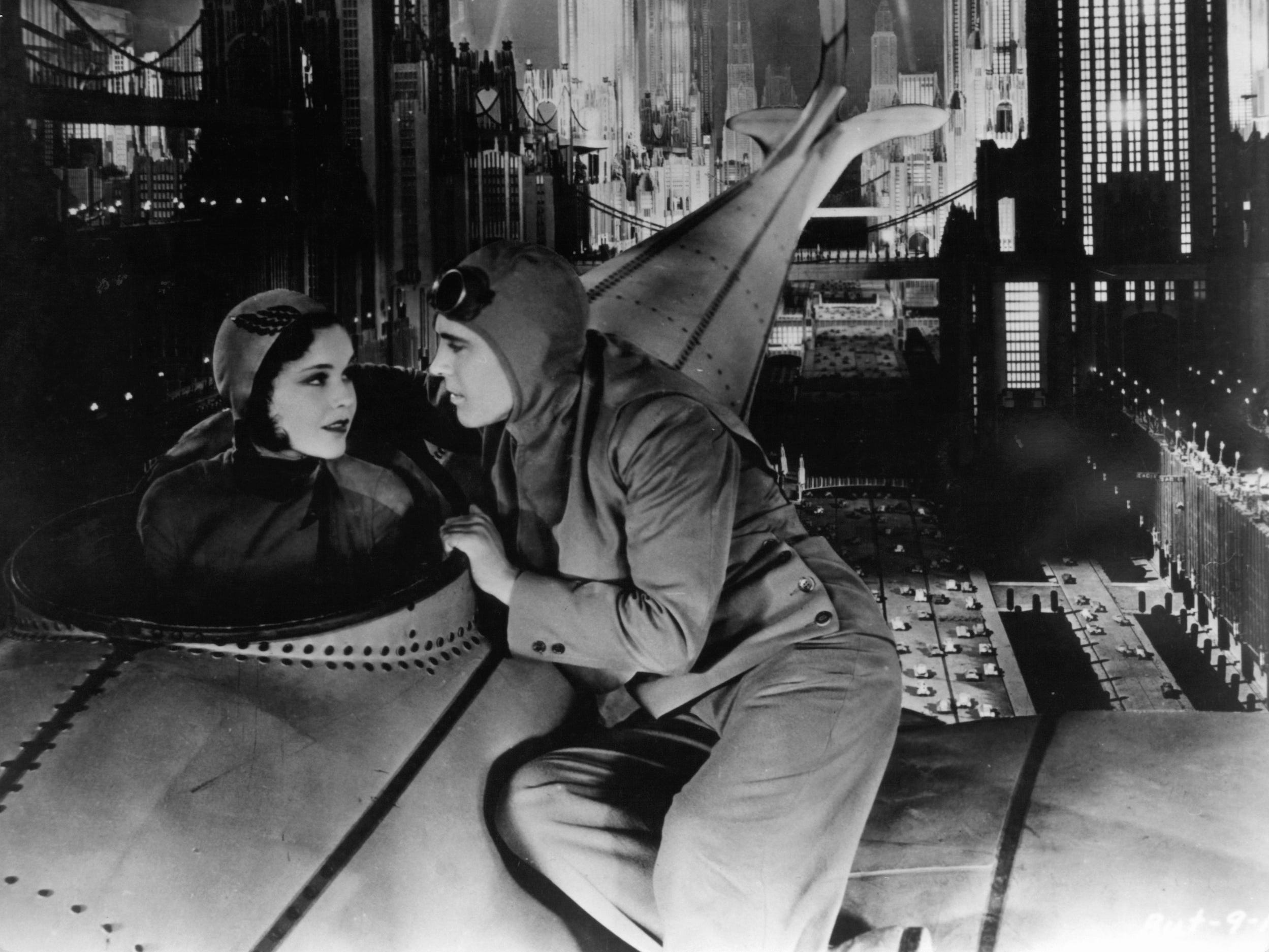
Maureen O’Sullivan says goodbye to John Garrick in a scene from the film “Just Imagine.”
Fox/Getty Images
“Just Imagine” has scenes with people flying around in machines that look more like planes than cars but can perform vertical take-offs and landings. In the movie, the aircraft moves through the air in straight lines, like cars in the sky.
The film takes place in a futuristic society where food has become pills, names have become numbers, and the government decides who people can or cannot marry. The technologically-advanced vision in “Just Imagine” took place in 1980, which might explain why flying car depictions and attempts started becoming more prolific.
H.G. Wells’ 1936 movie, “Things To Come,” has a brief scene with a helicopter/car
hybrid.
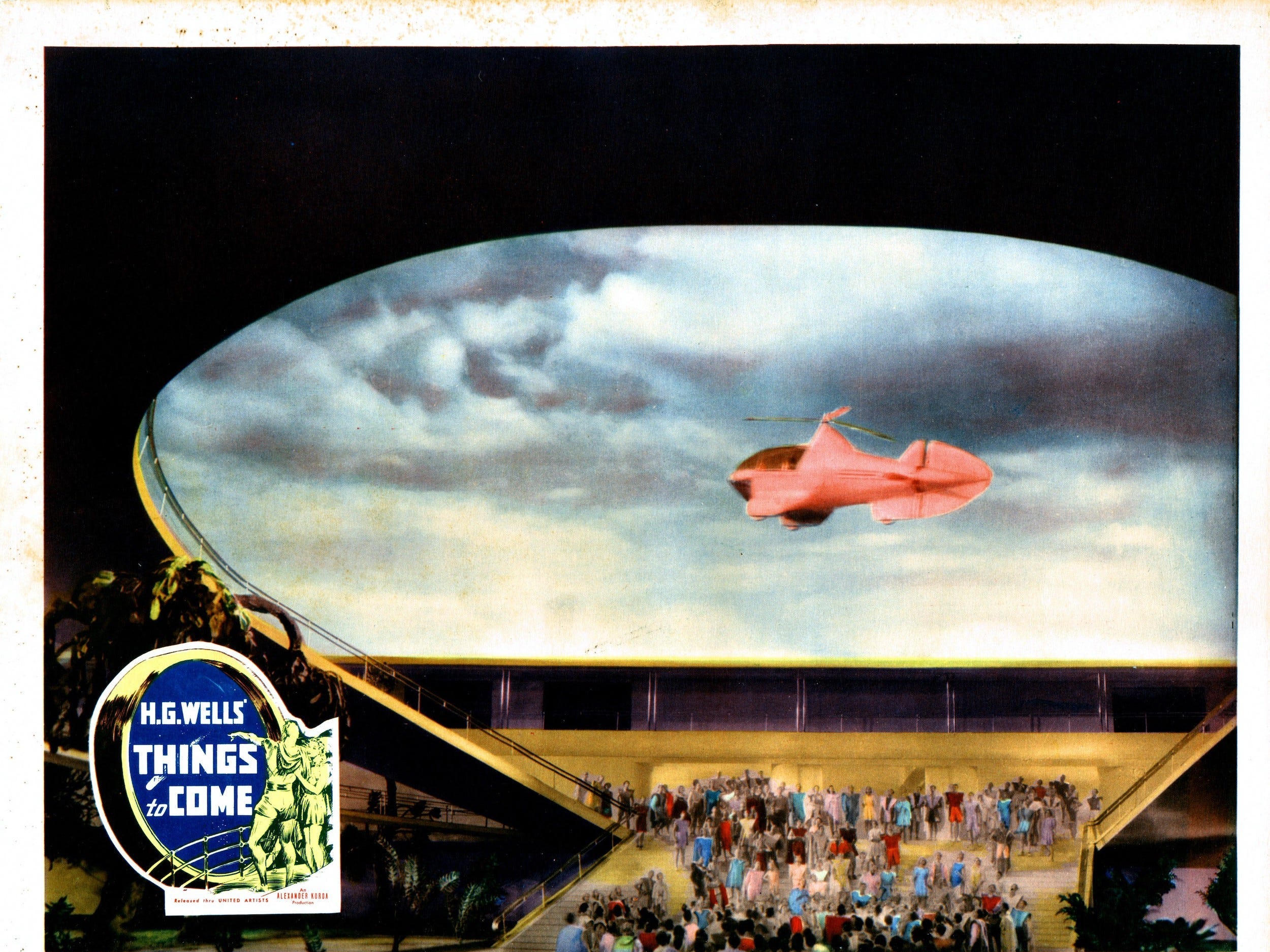
A “Things To Come” lobby card showing a scene from the movie with a flying automobile.
LMPC via Getty Images
The idea behind the vehicle seems a little absurd, especially since it looks more like a futuristic helicopter than it resembles a car.
H.G. Wells’ flying car becomes more believable when compared to modern examples of attempts at flying cars.
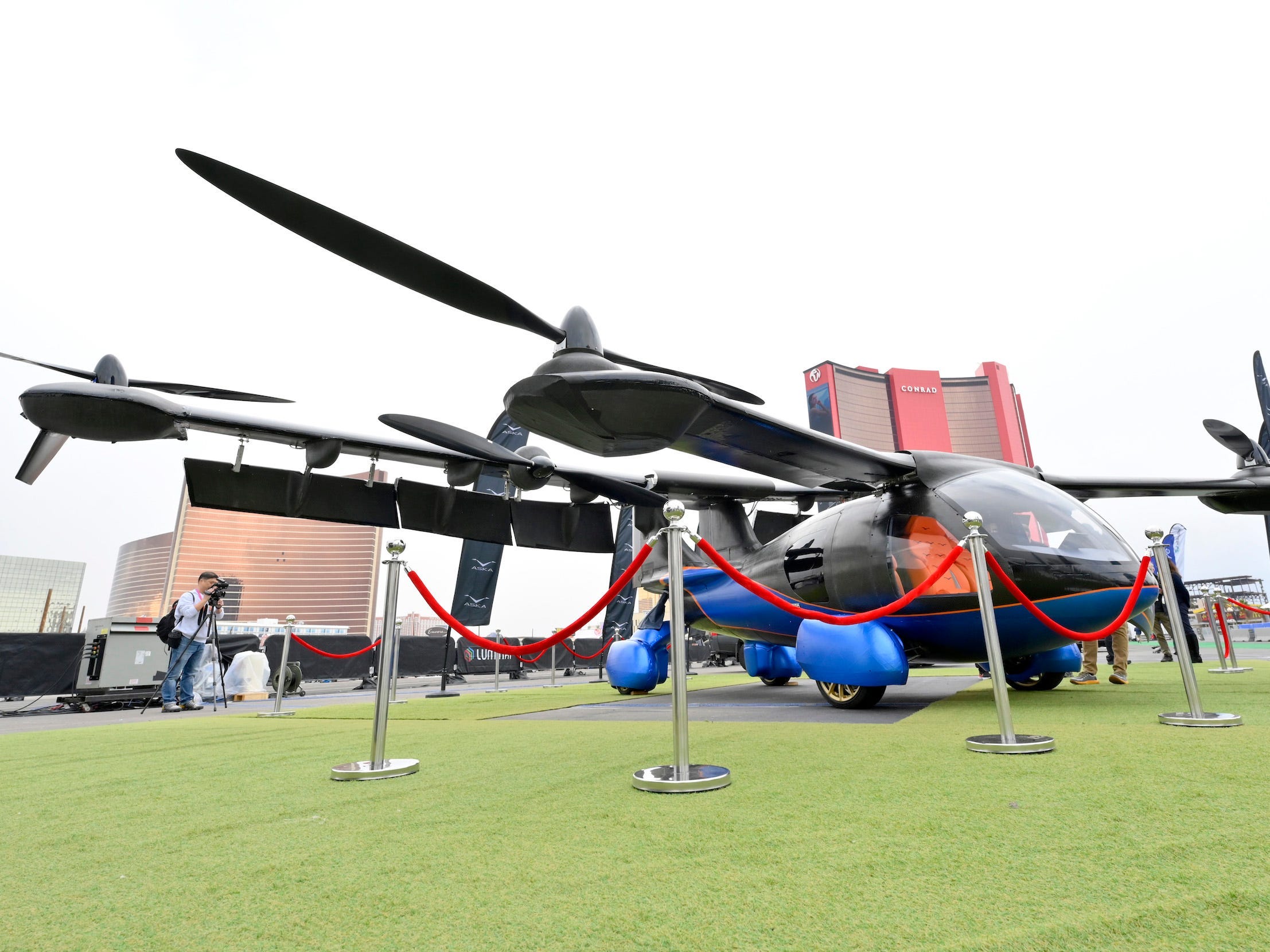
The prototype Aska
A5 flying car is displayed at CES 2023 at the Las Vegas Convention Center.
David Becker/Getty Images
The Aska A5 flying car prototype has rotary blades that fold in and out from the top, can fly 250 miles, and is an electric vehicle. According to Military and Aerospace Electronics, the car has also earned FAA airworthiness certification to begin testing phases.
Looking at H.G. Wells’ idea of a flying car and what we have started to achieve, it appears that Wells wasn’t too far off base.
Before we got to modern flying cars, movies and TV shows kept imagining cars in the sky.
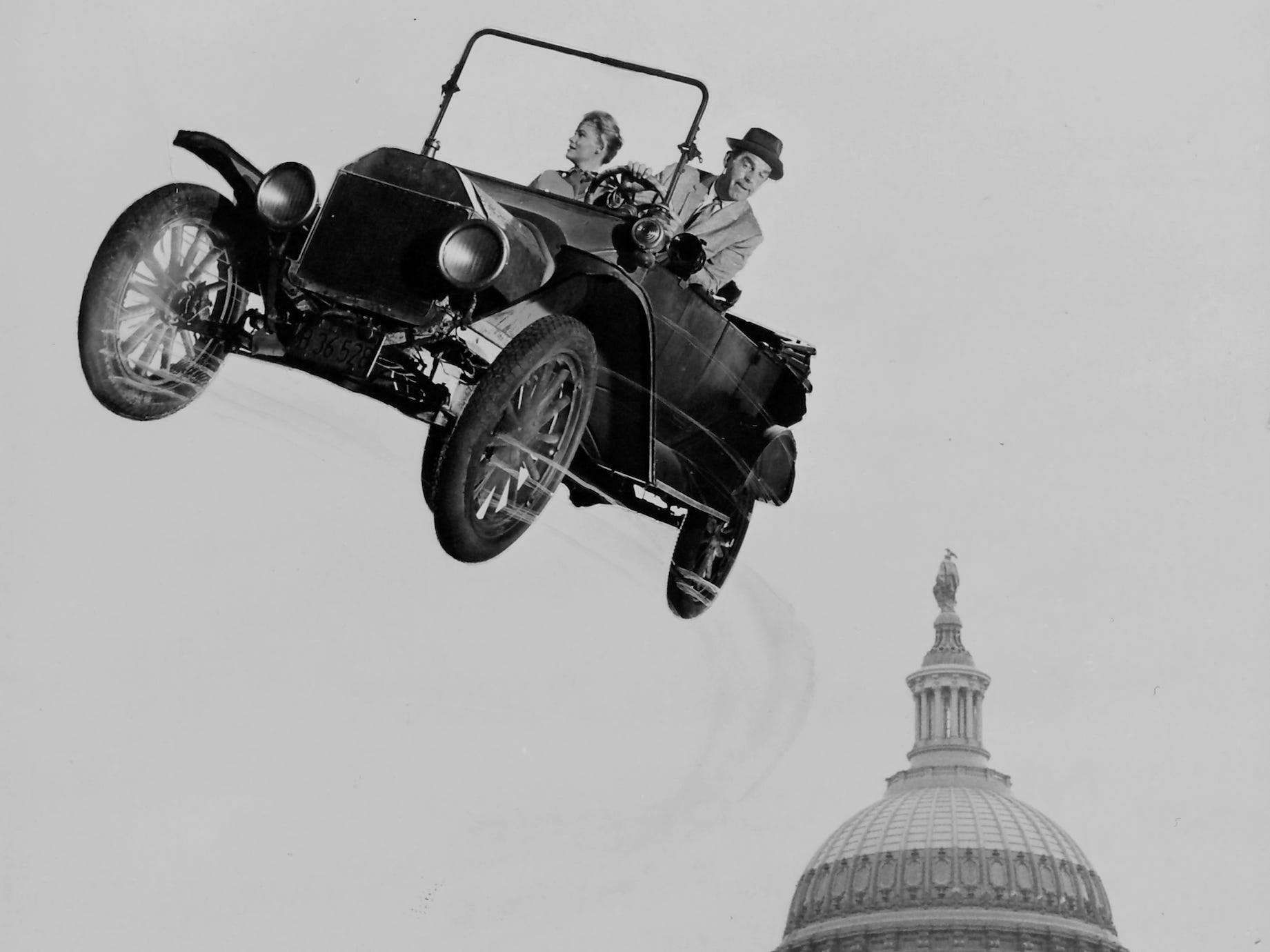
Nancy Olson and Fred Mac Murray in “The Absent Minded Professor.”
RDB/ullstein bild via Getty Images
The 60s saw a boom of flying cars in pop culture, starting with Disney’s “The Absent-Minded Professor.”
“The Absent-Minded Professor” was a departure from the science fiction movies of the early 20th century in its fantastical, rather than practical, approach to the flying car.
The flying car in “The Absent-Minded Professor” is achieved through an anti-gravity substance called flubber, created by the professor himself, which allows the car to fly without any changes to the frame or additions of rotors or wings.
Another famous example is “Chitty Chitty Bang Bang,” a musical that revolves around a flying car.
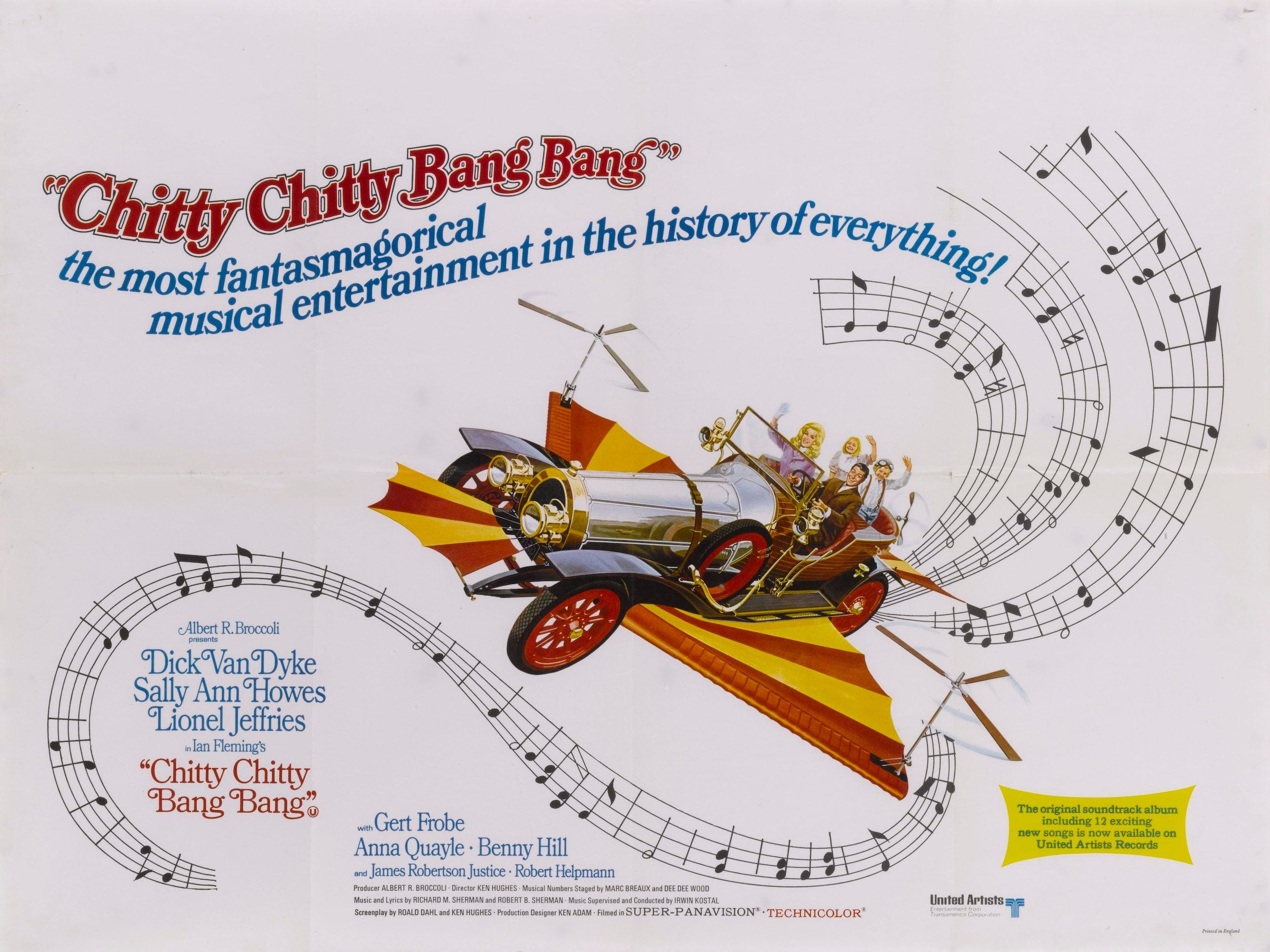
A poster for the children’s musical film “Chitty Chitty Bang Bang.”
Movie Poster Image Art/Getty Images.
Of course, one of the most famous examples of flying cars is in “The Jetsons.”
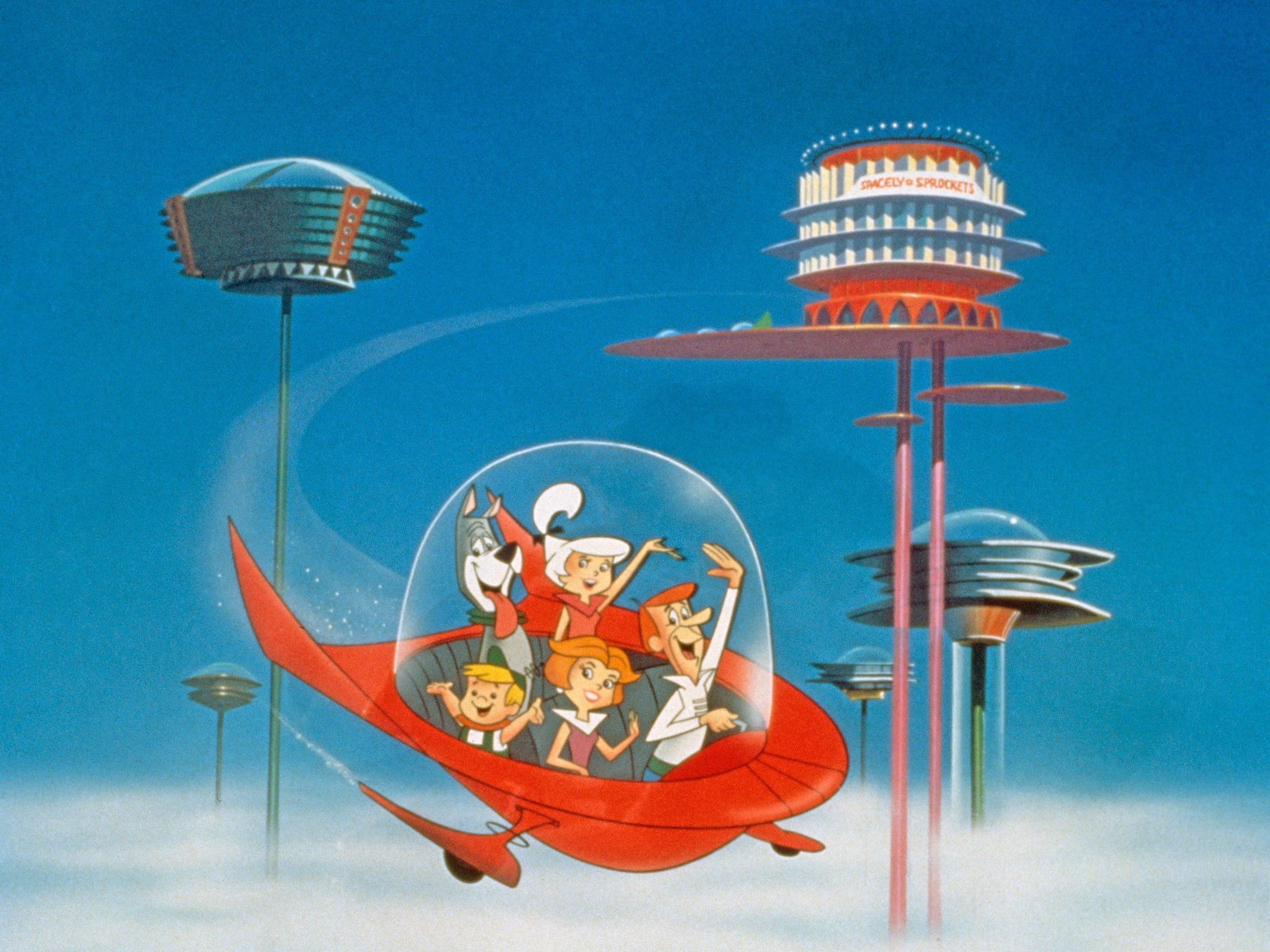
The Jetson family wave as they fly past buildings in space in their spaceship in a still from the animated television series, “The Jetsons.”
Warner Bros./Courtesy of Getty Images
“The Jetsons” premiered in September 1962 and only lasted one season (though it would return for two additional seasons in the 1980s), but its impact persists today. The cartoon depicted an idealized version of the future that was “a distillation of every Space Age promise Americans could muster,” according to Smithsonian Magazine.
James Bond even had a flying car in “The Man With the Golden Gun.”
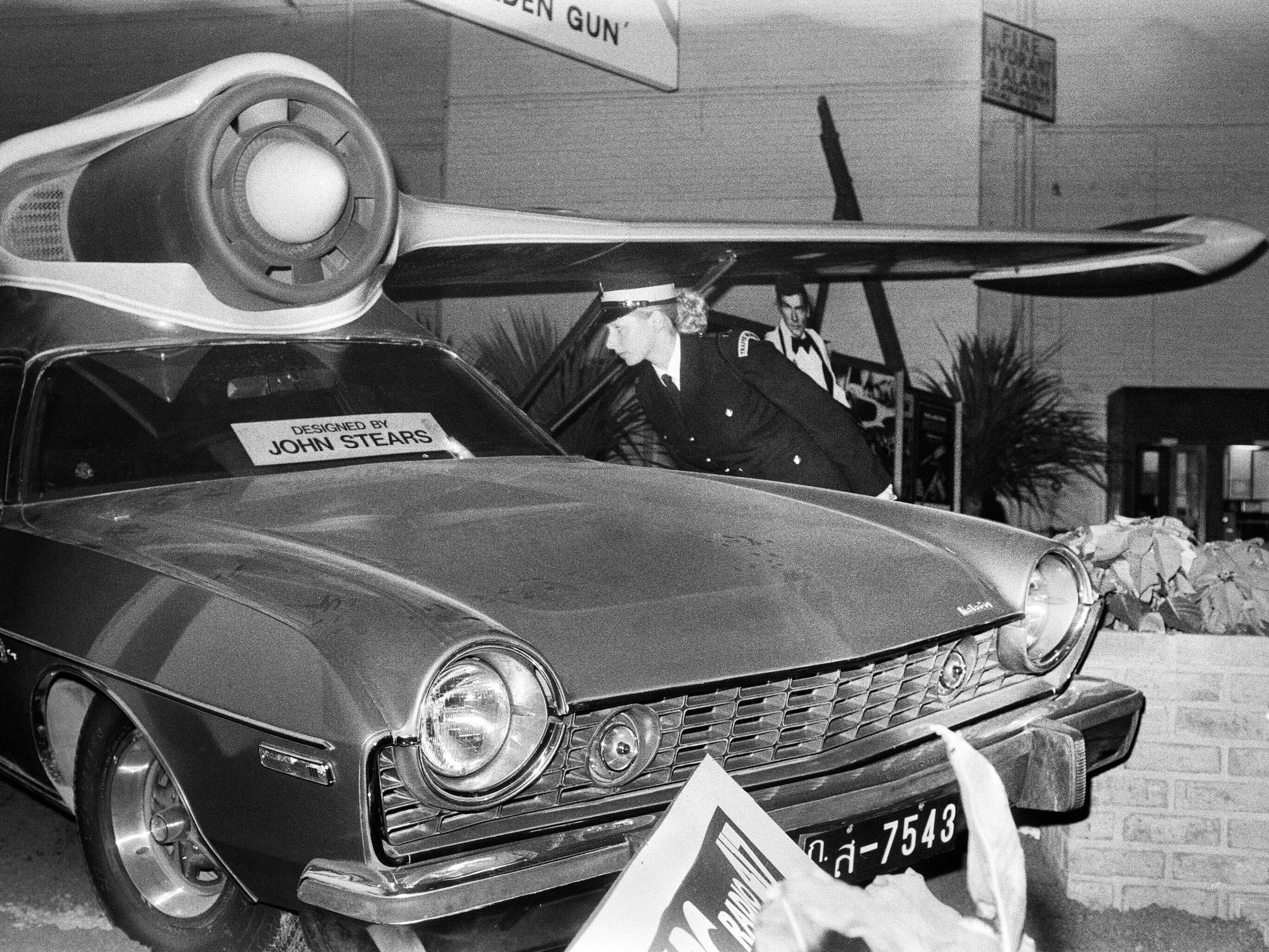
Jacqui Smith looks at the Flying Car model for the new James Bond film “The Man With The Golden Gun.”
Arthur Sidey/Mirrorpix/Getty Images
The design for the Bond car was not too far off from a real flying car prototype from 20 years earlier in 1947 — the Convair Car model 118.
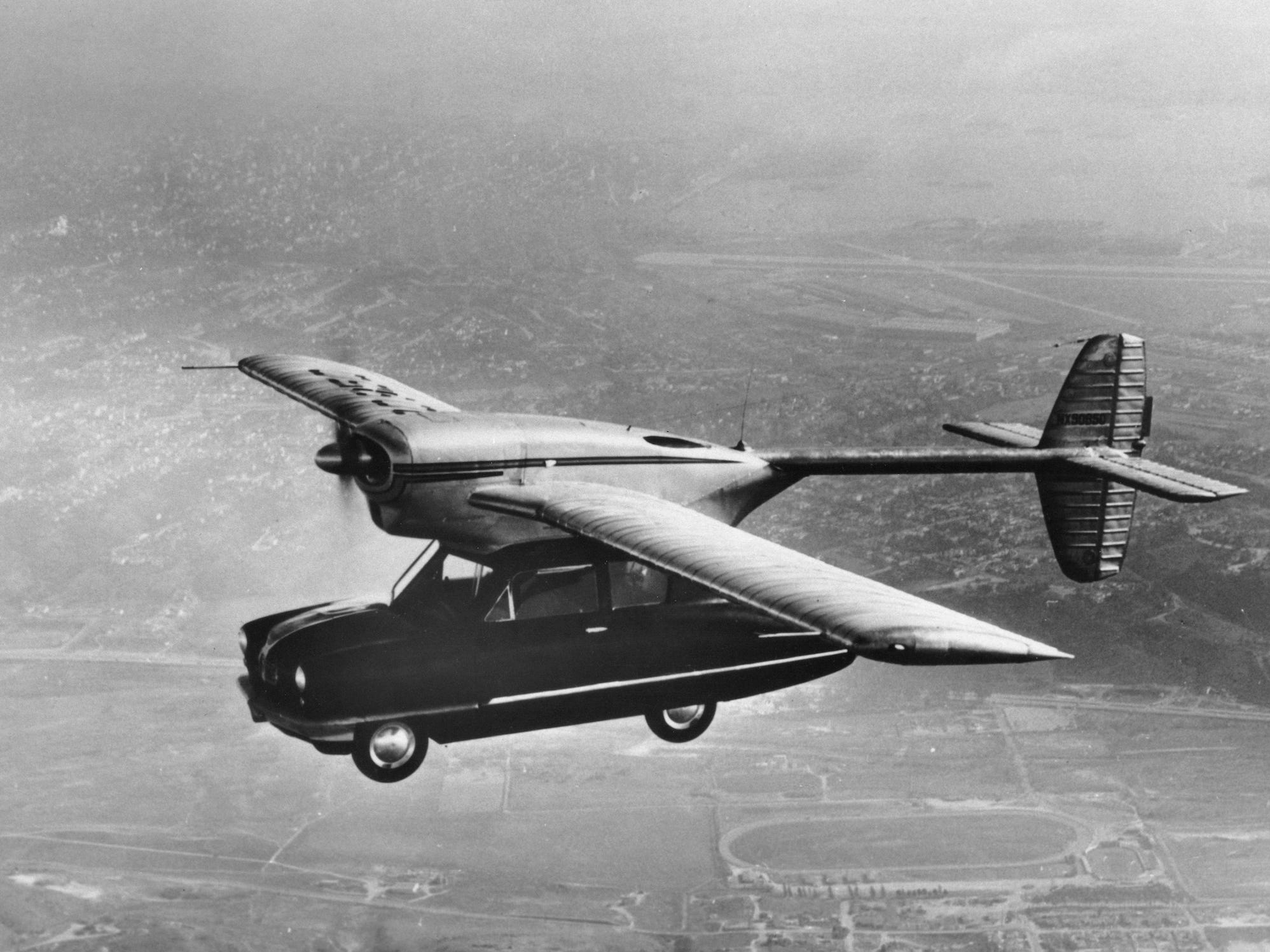
A flying Model 118 ConVairCar during a test flight in California in 1947.
FPG/Hulton Archive/Getty Images
The previous Convair Model 116 managed 66 successful flight tests, according to Complex. They improved the design for the Model 118, but it only had one test flight.
The test flight lasted an hour, but had to make an emergency landing because of low fuel. The pilot had to make an emergency landing that destroyed the car, damaged the wings, and injured the pilot, according to Popular Mechanics.
But not all attempts at flying cars were so lucky.
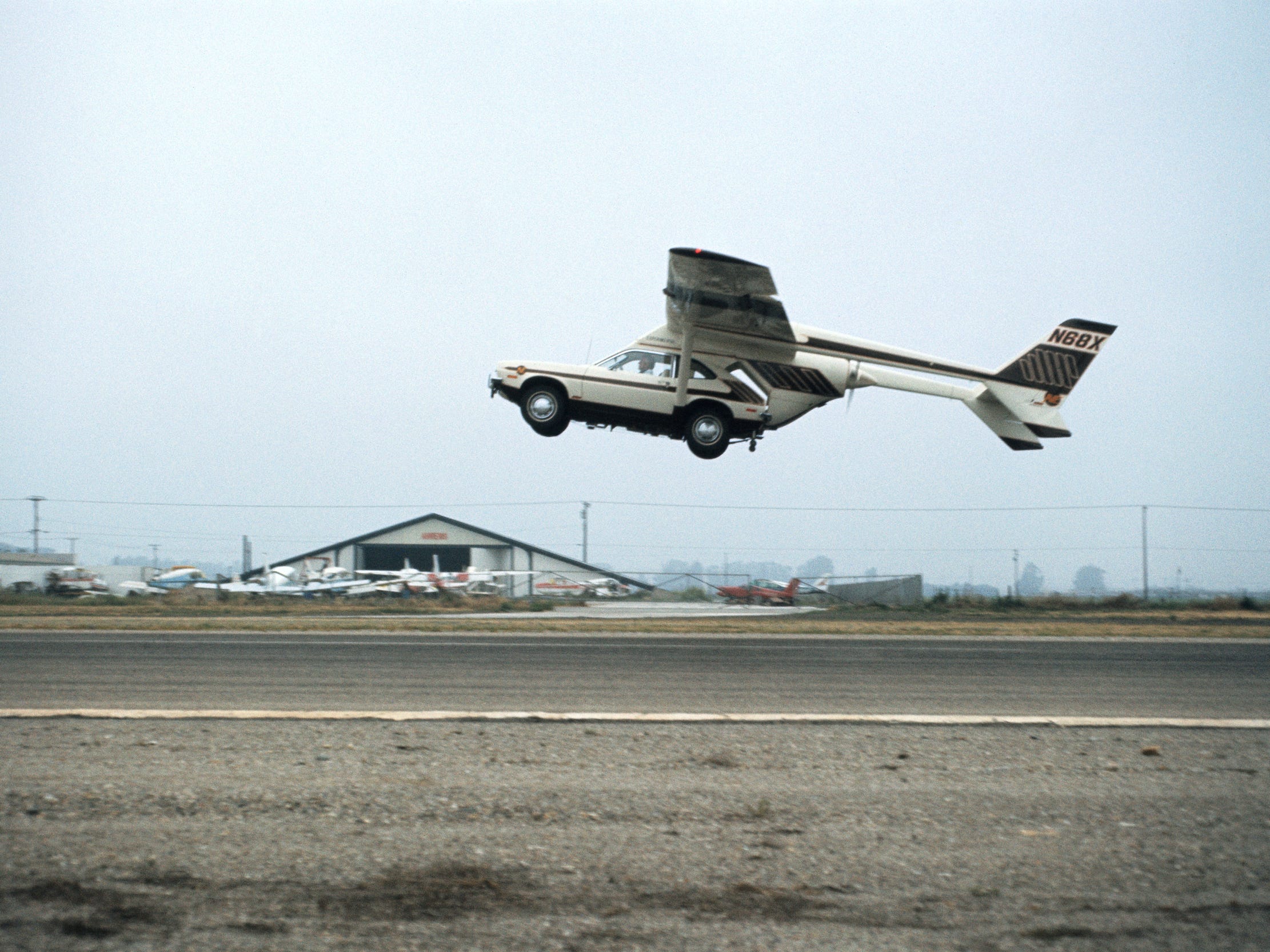
The AVE Mizar taking flight on an airport runway.
Bettmann/Getty Images
In 1971, Henry Smolinski and Harold Blake died when their flying car prototype crashed and exploded.
The two engineers from California were taking their car on a test flight when black smoke began emanating from it. The car crashed, and the two died as a result.
These real-life failures didn’t stop Hollywood from imagining flying cars. This time, they were more than just cars with wings attached.

A ‘Spinner’ flying car takes off in a scene from Ridley Scott’s futuristic thriller ‘Blade Runner’
Warner Bros./Archive Photos/Getty Images
1982’s “Blade Runner,” takes place in Los Angeles in 2019. In this universe, flying cars are as abundant as normal cars.
In reality, flying cars didn’t make it to the skies of Los Angeles in 2019. The movie “Just Imagine” believed we’d soar around in our flying cars or personal planes by the 1980s. Though there were multiple attempts to make it happen, none ended up taking off.
In addition to flying, the
Delorean, from the 1985 classic “Back to the Future,” could also travel through time.
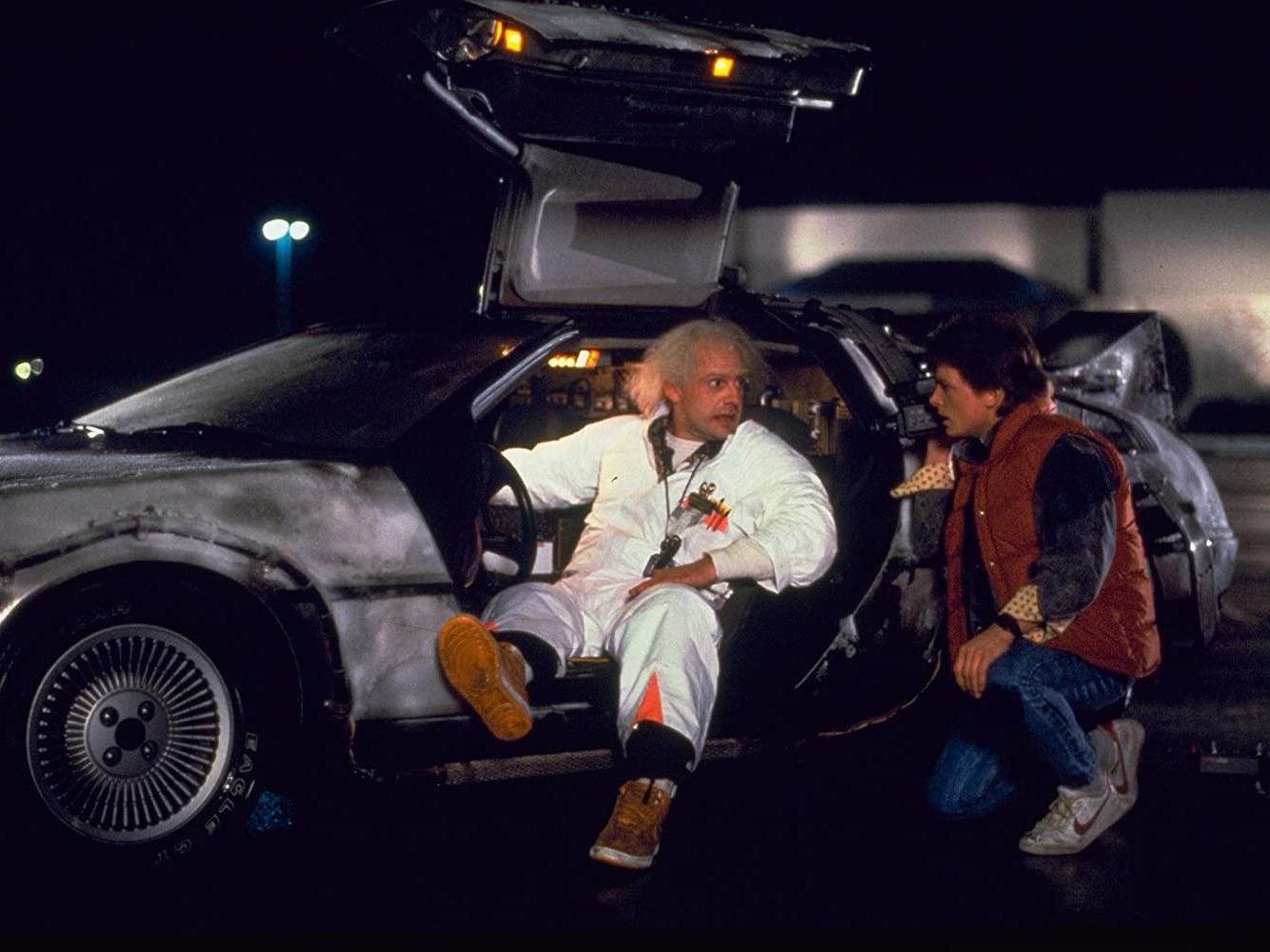
Universal Studios
The 1997 film “Fifth
Element” also depicted a society rife with flying cars.
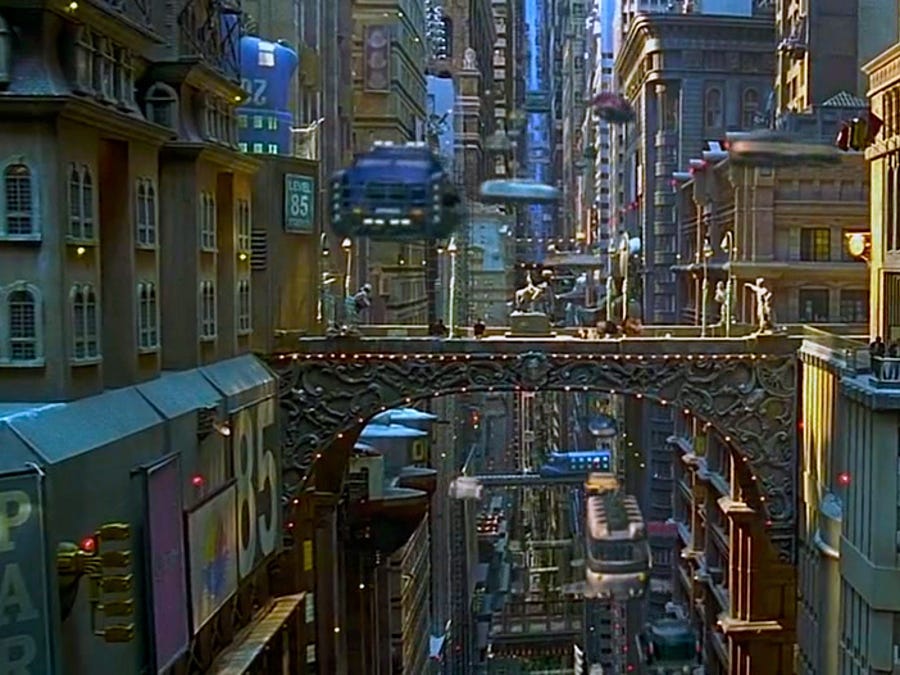
Fifth Element
So if we’ve been imagining flying cars for over 100 years, why are we still stuck commuting on the ground?
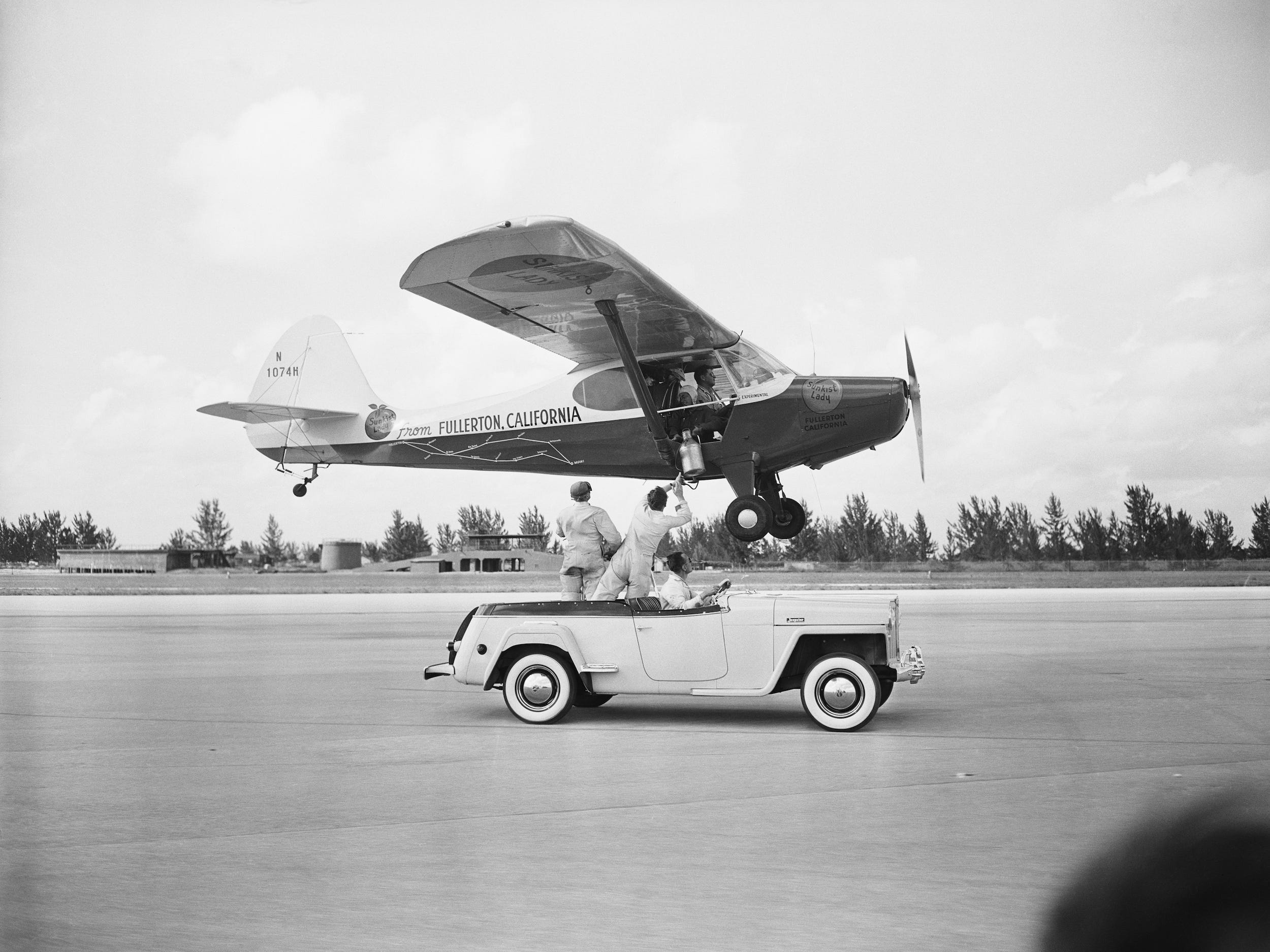
A plane is re-fueled mid-flight as it tries to break the flying endurance record
Bettman/Getty Images
The simple answer is that cars and planes are made for fundamentally different purposes.
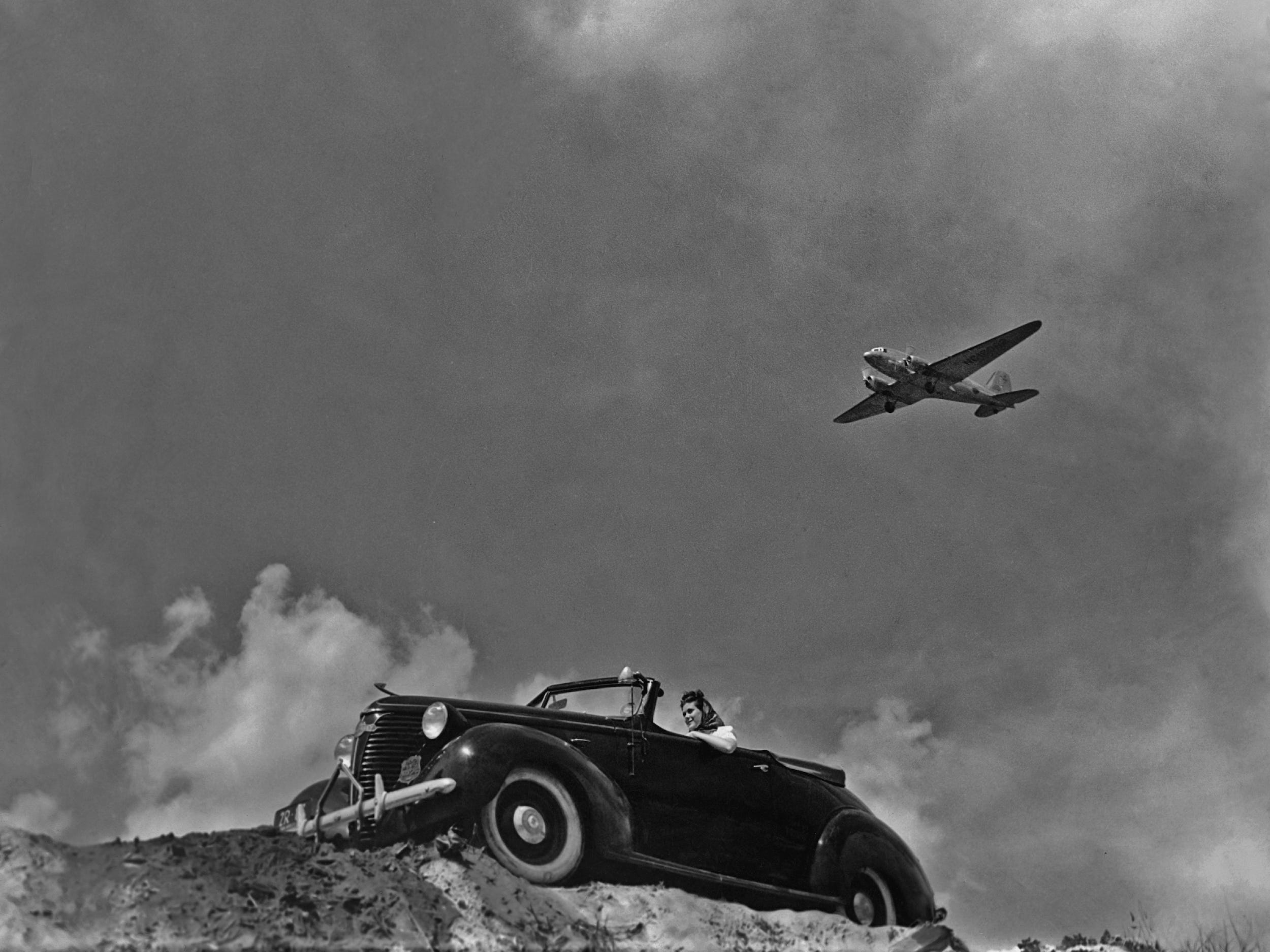
A woman sitting in a convertible car as an airplane flies overhead circa 1950.
FPG/Getty Images
In an interview with The New York Times, John Brown, the chief editor of Roadable Times, said through all the different iterations of flying cars, “none have been practical.”
“Cars have an aerodynamic that makes them hug the ground, whereas an aircraft is designed to do just the opposite,” Brown told The Times, “and cars need even weight distribution on all four wheels, while an aircraft has 90 percent of its weight on the back wheels.”
In addition to that, it’s hard to figure out insurance and licensing around flying cars. Some of them require pilot licenses, like Klein Visions Air car, and others only require a driver’s license.
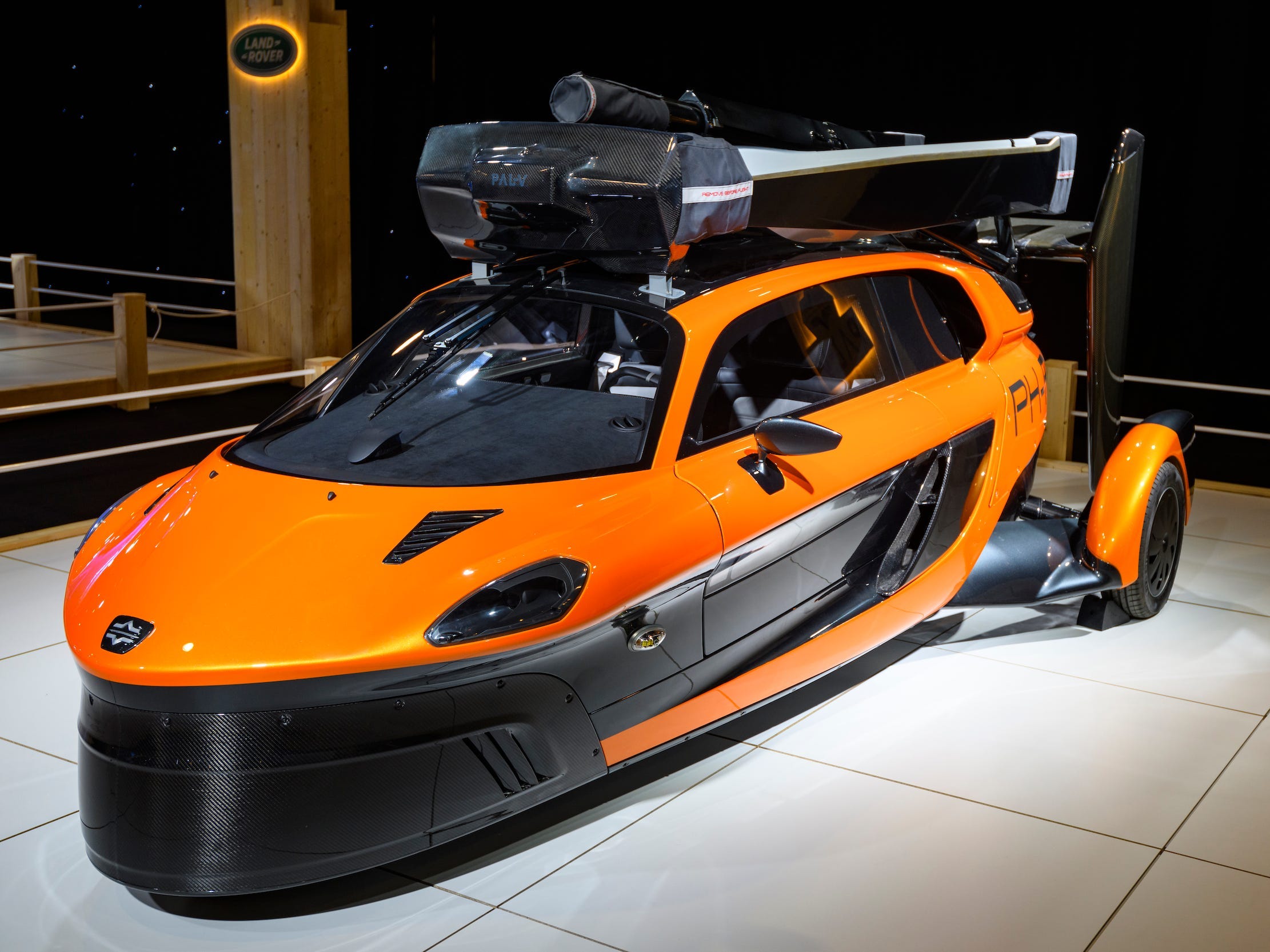
Pal-V Liberty on display at Brussels Expo
Sjoerd van der Wal/Getty Images
The Pal-V, a flying car from the Netherlands, requires a pilot’s license to operate and has components that fold in or pop up to make it flight-ready in 10 minutes.
The car-helicopter hybrid will cost $400,000, according to the BBC.
With the potential arrival of the Alef Model A, we’ve gotten one step closer to the future we’ve been dreaming of for over 100 years.
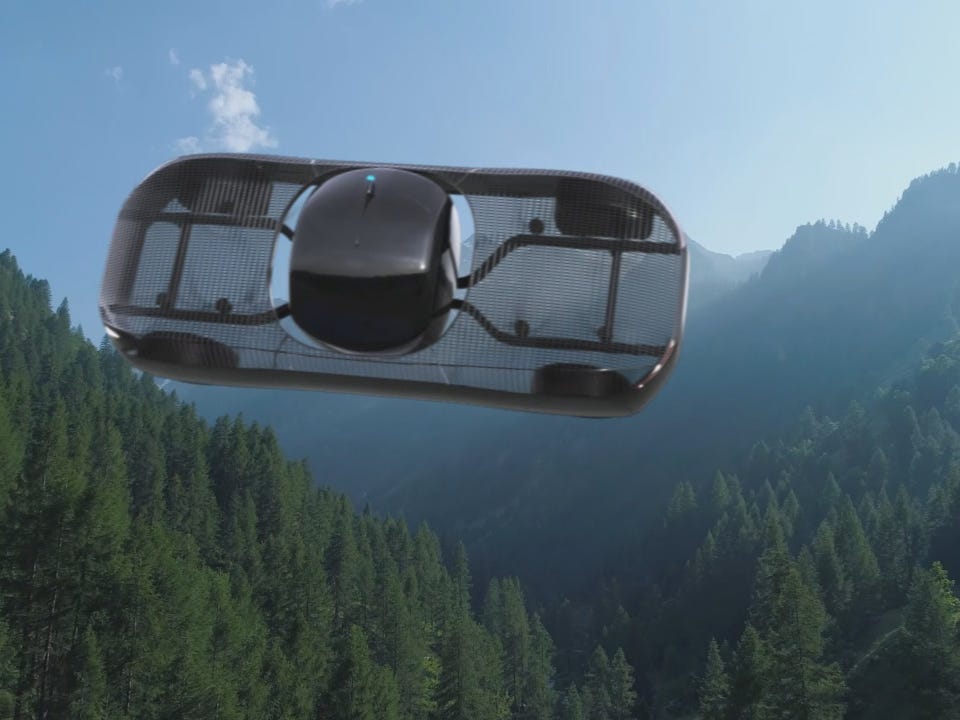
Alef in transition flight.
Alef Aeronautics
The Alef Model A will cost $300,000, but the company hopes to bring the cost-per-vehicle down to $35,000 by 2035, Insider reported.
The design of the car is a departure from traditional models of flying cars, but Alef cites “Back to the Future” as the inspiration behind the design of the car.



